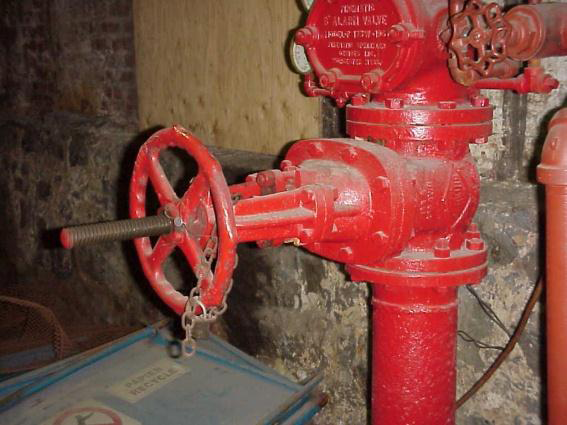Le systeme FireCycle à la caractéristique d'etre...
Dans un systeme antigel les 2 solutions utilisées sont :...
Un systeme antigel doit avoir un maximum de ______ têtes de...
Tous les avertisseurs manuels actionnés par clés dans un...
Le systeme FireCycle Se remet en fonction si la...
Un système de détection complet et autonome avec touts...
La durée de vie des avertisseurs de fumée et les...
Temps de fonctionnement maximal doit être de ______ secondes =...
· Gaz inerte:...
Le détecteur de fumée de type passif dans les conduites...
Différence entre détecteur de fumée et...
Quel doit être la température minimale pour un systeme...
Un systeme préaction doit avoir un maximum de ______...
Combien de gicleurs de rechange doit-on avoir en stock si notre...
Dans un systeme sous air, les raccords pompier sont placé :
Dans un systeme sous eau, les raccords pompier sont placé :
Quel doit être l'espacement minimale entre les têtes...
L'américium peut être dangereux s'il est...
Distance maximum entre les raccords pompiers et le sol
Support et Étrier...
Quel serait la distance minimale entre les gicleurs ?
Le Volume max. du réseau du systeme antigel est de :
Dans une systeme sous air, il est recommandé d'ajouter dans...
Type question here
Conditions qui influence le déclenchement d'un détecteur...
Rayons visibles
Un gicleur de couloir ou sans couleur propre a une température...
Détectent un phénomène du feu à un point...
Dans un système à une étape, codé, Le...
Rayon ultraviolet
Combien de gicleurs de rechange doit-on avoir en stock si notre...
Distance maximum entre les raccords pompiers et un poteau d'incendie
Relié
Quel est la distance minimale qu'un gicleur peut avoir d'un...
Détectent les variations de critères d'analyse...
Détectent un phénomène du feu à un certain...
Combien de gicleurs de rechange doit-on avoir en stock si nous avons...
Quel est le débit d'une tête de gicleur ?
Quels sont les distances à distance respecter pour...
Quel doit être la pression de l'air dans un systeme...
Dans un systeme préaction, a partir de combien de têtes...
Dans un systeme sous air, le ratio du principe différentiel est...
Dans un systeme sous ais : l'Essai à l'air...
Fonctionnement thermovélocimétrique :...
Les points forts sont:...
. Quel sont les dégagements des têtes de gicleurs?
...
Le systeme FireCycle Arrête l'écoulement aux...
Rayon infrarouge
Circuit _____ : pour que le système se mette en marche, ça...
Espace libre devant et autour des raccords pompiers
Quel doit être la hauteur d'installation d'un dispositif...
Selon la NFPA 13, quel est le pourcentage de déces qui se...
Les commutateurs de soupape de contrôle principale (gicleurs)...
Relié le type de systeme préaction avec sa description...
Un compresseur doit produire la pression normale dans le systeme en...
Installation des postes manuels...
La chambre à retardement à normalement une...
Un surpresseur a généralement une capacité de...
Les points forts sont:...
Un commutateur de débit d'eau peut avoir une minuterie...
Multi-portes...
Un surpresseur peut donner une pression de :
Fonctionnement du détecteur thermique linéaire...
Comment nomme t-on cela en anglais :
Dans les 5 phases du FEU, la phase ( Production de chaleur ) est :
Dispositifs devant être sous surveillance électrique
Quel est ce type de systeme d'autoprotection ?
Dans les 5 phases du FEU, la phase ( Production de flammes ) est :
Cochez les tuyaux aériens verticaux :
Vrai ou faux, normalement un systeme devrait être en mesure de...
Apres combien d'années tous les détecteurs d'un...
Ajout de postes manuels si la distance horizontalement dépasse...
Quel est le rôle du robinet d'essai d'alarme a la base d'une...
Circuit ______ : pour que le système entre en fonction, ça...
Relié les codes des couleurs des gicleurs avec la...
















